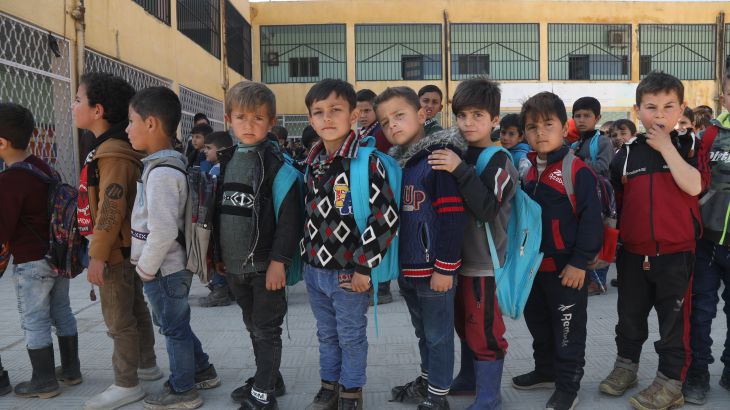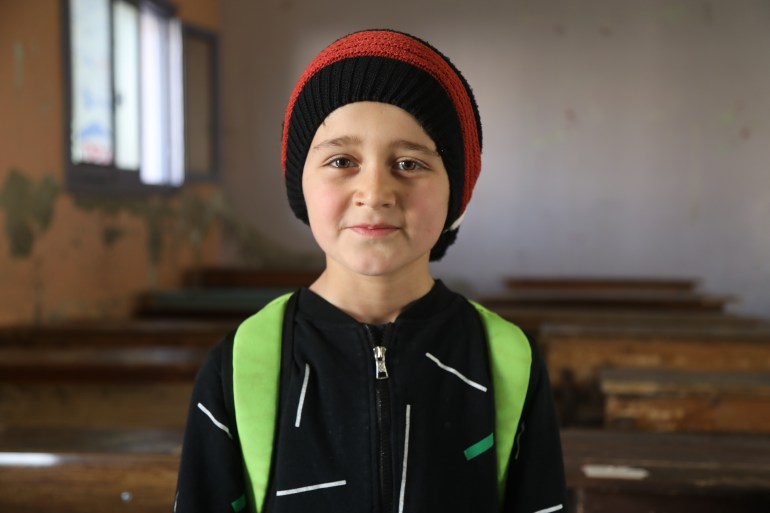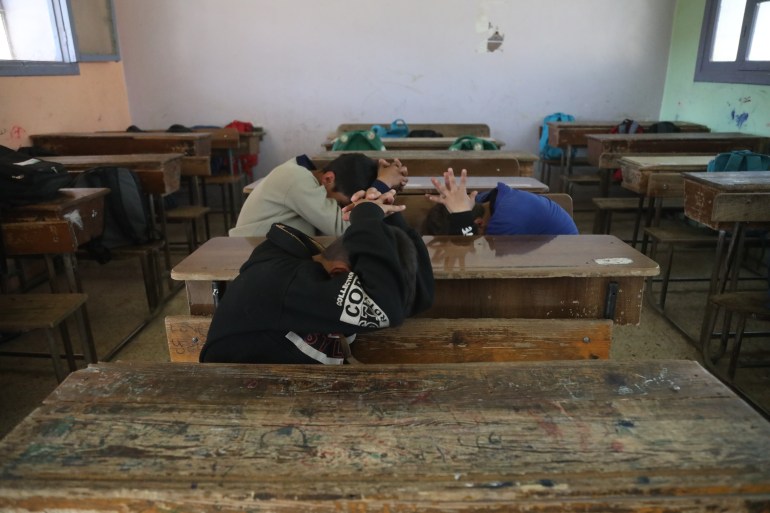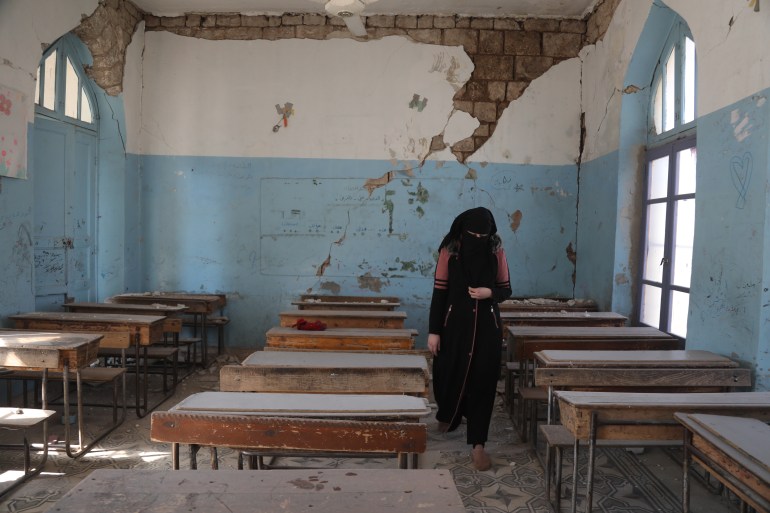Children go back to school in NW Syria after devastating quakes
According to the ministry of education in the Idlib governorate, about 250 schools in the region were damaged in recent earthquakes.

Harem, northwest Syria – Ward Shreit has returned to school and can barely contain his joy. Harem Boys School in rebel-held northwestern Syria reopened its doors on Sunday, nearly three weeks after two devastating earthquakes struck parts of Syria and southeast Turkey, killing tens of thousands of people and affecting the lives of millions of others.
“I’m happy to be back at school because I get to see my friends,” Ward, 10, told Al Jazeera. He says he did not lose any family members in the quake, but one of his classmates had died.
Keep reading
list of 3 itemsVillagers mourn mosque destroyed by Syria’s earthquake
Death toll climbs above 50,000 after Turkey, Syria earthquakes
“I felt sad he wasn’t at school and that I would never see him again. He was smart, and we used to play with each other a lot,” Ward said.

Students returning to school in the opposition-held northwest territory recently took part in evacuation drills in case of future earthquakes.
Ahmad Sheikh Ahmad, the head teacher of Harem Boys School, said the educational board decided to design and implement these drills for the safety of the children and teachers alike, and on Saturday and Sunday, the school dedicated the last two class sessions to the drills.
“We taught them that if they hear the sirens ringing, they must proceed in an orderly and calm way to the school’s playground since it is a flat area that can accommodate everyone,” Ahmad said.
“In case it was a – God forbid – strong earthquake, we taught them how to take cover under their desks with their hands over their heads to protect themselves. If students are not in the classrooms or outside once the sirens ring, then they must adopt the brace position and find a corner of a wall and stay there.”
Attendance was only at half capacity on Sunday as students are still shaken up, the head teacher said, adding that he hoped that the return of school hours will contribute a sense of normalcy to students’ lives.

Schools damaged
According to the ministry of education in the Idlib governorate, about 250 schools in the region were damaged in the quakes, primarily in the cities of Harem, Salqin, Atarib, Idlib, and al-Mulund. One school was completely destroyed, and the majority of the schools – 203 – were partially damaged. The remaining schools suffered from minor damages.
The ministry also said that 39 teachers and 421 students were killed.
Jamila al-Turk, who lost two students from her second-grade class at the Harem Rural School, was shocked at the level of damage done to the building.
“I went to see my classroom and remembered the students and teachers we lost due to the earthquake,” the 23-year-old teacher said.
“This school meant a lot to me, it was like my second home. I spent most of my time here and counted the students like my own children.”
Al-Turk says she hopes to continue giving classes to her students in a different place, even if it means taking a third shift at a different school.
“My message to my students is to prioritise their education no matter what, as it’s the path to a better life,” she said. “I hope the school will be rebuilt quickly.”

Mohammed al-Khatib, the principal at the school, said all of the students had to be transferred to a neighbouring one.
“The school had three wings and 14 classrooms overall,” he explained. “The main wing was built during the French occupation of Syria in 1928, and has six classrooms and four administrative offices. This was the part that was most damaged in the earthquake because of the old structure.”
The school’s history and longevity meant a lot to the residents of Harem, who hoped that the original structure could be renovated and not be completely demolished. But al-Khatib said demolishing the main wing was the most likely prospect, as the infrastructure was badly damaged and remains too hazardous to stand alone.
“Entering the school and not seeing students is like entering your own home and not finding your family there,” he said. It’s a very difficult feeling, not hearing the students’ chatter and laughter. It’s tragic.”
The school lost at least six students and one teacher in the quakes.
“We have missing students that we haven’t been able to reach yet, so we don’t know what their fate is,” al-Khatib said. “Maybe they left Harem with their families. Let’s hope that is the case.”
Fadel Abu Bakr, the supervisor of the Harem Educational Complex that oversees 60,000 students, said about 10 days of school were missed.
“We are monitoring progress and the resumption of lessons in other still-standing schools and tent schools,” he said.
The majority of teachers and children were in good spirits after he visited some of the schools.
“The return of students to school lessened the trauma of what people experienced in the aftermath of the quakes,” he said. “It was good for them to be back in school surrounded by each other.”
Additional reporting by Linah Alsaafin.